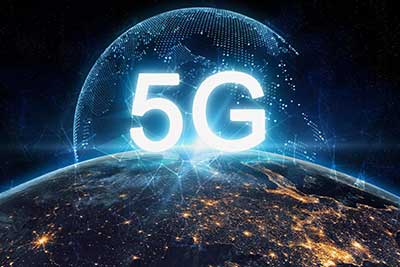Relevance: GS-3: Science and Technology- developments and their applications and effects in everyday life.
Key Phrases: TRAI, Telecom Disputes Settlement and Appellate Tribunal , captive private wireless networks, telemedicine, spectrum, frequency bands, telecommunications.
Why in News?
- Recently TRAI has recommended a sharp 36 per cent cut in the pan-India reserve prices for 3300-3670 MHz, which will be used for 5G services, from ₹492 crore per MHz to ₹317 per MHz.
- TRAI has also recommended a further cut of 40 per cent in the reserve price for 700MHz spectrum, compared to the 2021 auction, and 66 per cent lower compared to the 2016 reserve prices, to ₹3,930 crore per MHz.
- The pan-India reserve prices for other existing spectrum bands (800MHz to 2500MHz) have also been slashed in the range of 24-49 per cent compared to 2021 auctions.
About Telecom Regulatory Authority of India
- The Telecom Regulatory Authority of India (TRAI) is a regulatory body set up by the Government of India under section 3 of the Telecom Regulatory Authority of India Act, 1997.
- It is the regulator of the telecommunications sector in India.
- It consists of a Chairperson and not more than two full-time members and not more than two part-time members.
- The TRAI Act was amended by an ordinance, effective from 24 January 2000, establishing a Telecom Disputes Settlement and Appellate Tribunal (TDSAT) to take over the adjudicatory and disputes functions from TRAI.
How Significant is TRAI’s Recommendation on Spectrum Price?
- The recommendations set the ball rolling for India to adopt 5G services.
- The 3300-3670 Mhz band and the 700 Mhz band are crucial for 5G services.
- 5G rollout has been delayed in India because the operators could not buy spectrum in the last round of auction due to the high reserve price.
- Therefore a 36-40 per cent cut in the reserve price should attract operators to buy spectrum this time.

How Much Money will the Operators have to Spend to buy Spectrum?
- Operators will have to be ready to spend at least ₹35,000 crore each to acquire pan-India 5G spectrum, going by the reserve price set by the telecom regulator.
- The operators will be eyeing spectrum in the 3500 Mhz band and the 700 Mhz band, but are likely to acquire more of the former since it is priced much lower — ₹320 crore per Mhz — compared with ₹3,900 crore per Mhz in the 3500Mhz band.
- An operator will need at least 100 Mhz of spectrum to offer any meaningful 5G services.
- This means that an operator will need at least ₹32,000 crore to acquire pan-India spectrum in the 3500 Mhz band.
- In addition, spectrum in the 700 Mhz band will be needed for high-density areas, where coverage will be crucial.
- Spectrum in the sub-Ghz bands is more valuable due to their efficient propagation characteristics compared to higher frequency bands.
What are TRAI’s Other Proposals?
- TRAI has proposed to allow enterprises to take spectrum from the Government to run captive private wireless networks (CPWN).
- This can be a gamechanger for enterprise communications as companies like TCS , Tata Motors and JSW Steel can take spectrum directly and manage their own network without relying on telecom operators, who have been more focused on consumer broadband.
- TRAI has recommended that the spectrum for the private networks can be assigned administratively on demand, through a widely publicized online portal-based process in a fair and transparent manner.
- It has also made provisions to allocate spectrum for satellite-based broadband services.
- This is important, given that a number of satellite players including Sunil Mittal-backed OneWeb and Elon Musk-backed StarLink are gearing up to launch services in India.
What does all of this Mean for Consumers?
- Consumers can expect to experience 5G services by the end of this year or early 2023. This will transform the wireless broadband market significantly as 5G brings higher speeds and lower latencies, which will enable services like telemedicine in addition to entertainment and video streaming.
- The advent of private enterprise networks and satellite broadband services will infuse competition in a sector that currently has only two strong players(AirTel and Reliance Jio).
- So consumers, both retail and enterprise, will get more options for their communication needs.
Conclusion
- The Government has given top priority to creating digital infrastructure and rolling out 5G services as it is crucial to build India’s digital future.
- The launch of 5G services has already been delayed because the reserve price for the spectrum in the last round of auctions was too much for the operators.
- The Government has spectrum worth ₹5 lakh crore and the real loss to the exchquer would be if operators do not buy due to high pricing.
- A reduction in spectrum price will enable the government to sell at least some of the available spectrum. The economic growth that will come as a result of digital tools and 5G infrastructure will be the real gain.
Sources: The Hindu BL
Mains Question:
Q. What is the future of 5G in India? Briefly discuss important recommendations made by TRAI on spectrum pricing? (250 Words).









